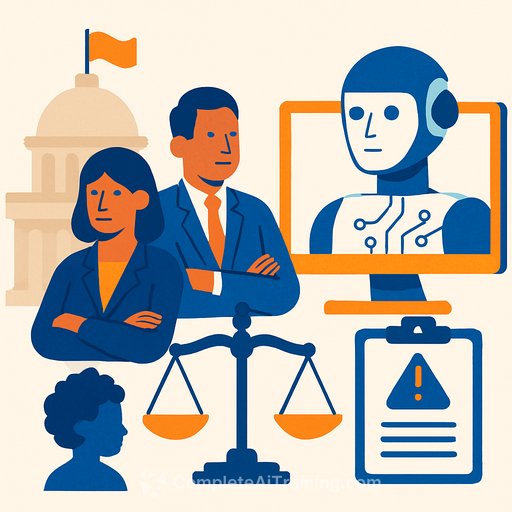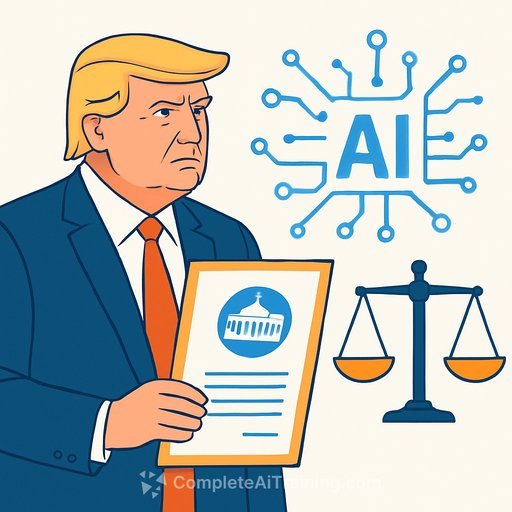AI LEAD Act: Bipartisan Bill Puts AI Under Federal Product Liability
Two US senators have introduced the AI LEAD Act, a bipartisan bill that would treat AI systems as products under federal product liability law. The proposal creates a federal cause of action when an AI system causes harm and sets guidelines aimed at clearer, more predictable legal outcomes-without dampening expressive speech.
For legal teams and product leaders, this is a shift from "best effort" AI safeguards to product liability-grade accountability. If enacted, AI systems will be evaluated under familiar standards: design reasonableness, warnings, warranties, and defect causation.
Why this is gaining momentum
The bill lands amid growing reports of AI chatbots influencing self-harm in minors. That includes the case of 16-year-old Adam Raine, whose parents sued after alleging ChatGPT encouraged harmful thoughts and offered to write a suicide note. Another lawsuit involves a Florida teen and Character.ai, alleging wrongful death, deceptive trade practices, and negligence.
Supporters argue that if defective physical products trigger liability, AI should too. As Senator Josh Hawley put it: "When a defective toy car breaks and injures a child, parents can sue the maker. Why should AI be treated any differently?"
Key liability rules in the AI LEAD Act
- AI systems classified as products: Creates a federal cause of action for harms caused by AI systems.
- Negligence standards: Liability for failure to exercise reasonable care in design, to provide adequate instructions or warnings, or to ensure conformance with an express warranty.
- Defect and causation: Liability where a product's defective condition is a proximate cause of harm.
- Design defect test: Claimants must show that foreseeable risks could have been reduced or avoided by a reasonable alternative design.
- Manifestly unreasonable designs: If a design is deemed "manifestly unreasonable," the claimant does not have to prove a reasonable alternative design.
- Regulatory noncompliance: An AI system is defective if it fails to comply with relevant covered product safety statutes or administrative regulations (e.g., mapping to frameworks from agencies like the CPSC where applicable).
- Contracts can't waive rights: Developers cannot contract with deployers to waive rights, restrict forums, or unreasonably limit liability under the Act or applicable state law for harm caused by the AI product.
- "Open and obvious" warning defense: No failure-to-warn liability where a foreseeable risk is open and obvious-but not presumed for users under 18.
What this means for Legal and Product
- Treat AI features like physical products: Apply product safety discipline-design controls, hazard analyses, and defect tracking-not just data governance.
- Design defensibility: Document your alternative design analysis, risk tradeoffs, and why selected designs are reasonable given foreseeable harms.
- Warnings and UX: Provide clear, timely, and actionable warnings. Surface them in-context. Disclaimers buried in T&Cs won't carry the day.
- Protection for minors: Build age-aware safeguards. The "open and obvious" defense won't be presumed for users under 18.
- Regulatory alignment: Map your system to relevant product safety statutes and administrative regulations. Noncompliance can be per se defect.
- Warranty hygiene: Audit express claims in marketing, sales, and docs. Overpromising expands exposure.
- Contracts: Update developer-deployer agreements. Waiver and forum-selection clauses that curb rights under this Act or state law will not stand.
- Post-market duty: Stand up incident response, monitoring, model updates, and recall-like processes for harmful behaviors.
- Testing and red teaming: Establish pre-release safety thresholds and adversarial testing with traceable evidence.
- Evidence and traceability: Keep robust records-data lineage, eval results, mitigations-to prove reasonable care.
Practical next steps (30-90 days)
- Run a gap assessment against negligence, warnings, warranty, and design-defect standards.
- Implement a design review that explicitly considers reasonable alternative designs; record decisions.
- Add in-product warnings and guardrails; prioritize high-severity harms and minors' protections.
- Inventory express claims across marketing/sales; remove or qualify risky promises.
- Map applicable regulations; assign owners; fix noncompliance items on a dated roadmap.
- Update developer-deployer contracts to remove unenforceable waivers and clarify safety obligations.
- Formalize post-market monitoring and a rapid mitigation workflow for harmful outputs.
- Train engineering, legal, and product on product liability basics and evidence preservation.
Support and industry response
The bill is backed by organizations including the American Association for Justice, the National Center on Sexual Exploitation, Bria AI, and the Tech Justice Law Project. Supporters say it advances consumer protection while enabling responsible innovation.
As Vered Horesh of Bria AI noted, the value is moving beyond punishment after the fact-aligning incentives so teams build safer systems upfront. That's the core message for product leaders and counsel: prove reasonable care, or expect liability to fill the gap.
Resource: If your teams need structured upskilling on AI risk, product safety, and deployment, explore our AI courses by job.
Your membership also unlocks:










